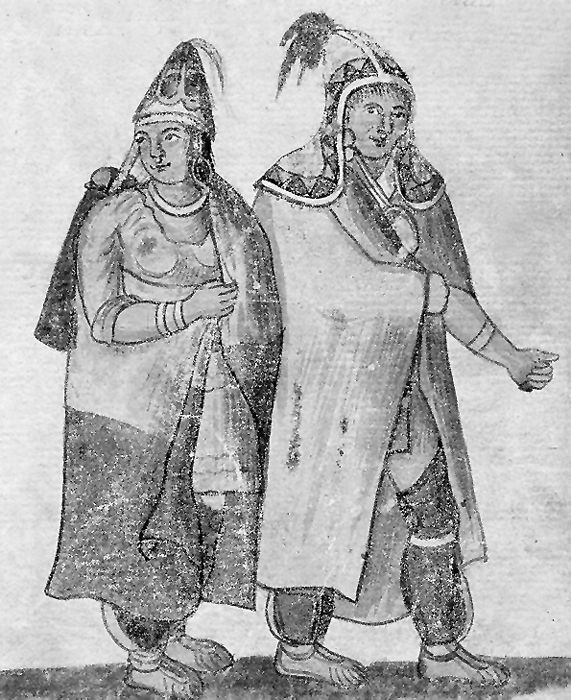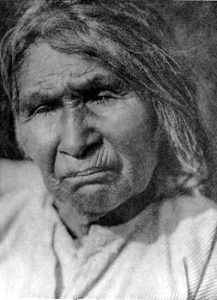
Whispers from the Cloud Peaks: The Enduring Mystery of the Accominta
In a world increasingly mapped, measured, and connected, the very notion of a truly "lost" civilization seems an anachronism, a relic of an age of daring explorers and uncharted territories. Yet, tucked away in the dizzying altitudes of the Serpent’s Spine Mountains – a range so remote and formidable it remains largely untouched by modern human activity – a remarkable truth endures. Here, shrouded in perpetual mist and ancient mystery, thrives the Accominta tribe, a people whose existence has only recently come to light, challenging our perceptions of isolation, resilience, and the delicate balance between preservation and progress.
The story of the Accominta is not one of dramatic discovery by intrepid adventurers, but rather a slow, cautious unveiling by a dedicated team of ethnobotanists and anthropologists. Led by the seasoned Dr. Aris Thorne from the Global Indigenous Cultures Institute, the team initially ventured into the lower reaches of the Serpent’s Spine in search of rare medicinal plants. What they stumbled upon in 2017, after months of painstaking trekking through treacherous terrain, was far more profound: faint smoke plumes rising from an impossibly high, hidden valley, and the distant, haunting melody of an unknown song carried on the wind.
“It was like stepping back in time, yet simultaneously forward into a profound understanding of human adaptability,” Dr. Thorne recounted in a recent interview, his voice still tinged with awe. “We initially thought it was a temporary encampment, perhaps a nomadic group. But the scale of their terraced agriculture, the complexity of their dwellings, and their sheer numbers indicated a long-established, sophisticated society.”

A Civilization Forged in Stone and Sky
The Accominta, whose name in their own melodic language, ‘Akom-ta’, translates roughly to "Children of the Sky-Weavers," have crafted an existence in one of the planet’s most inhospitable environments. Their villages are marvels of indigenous engineering: multi-story dwellings carved into the sheer rock faces, connected by intricate rope bridges that span dizzying chasms. These structures, seamlessly integrated with the natural contours of the mountains, are not merely shelters but extensions of the landscape itself, testament to generations of intimate knowledge of their surroundings.
Life for the Accominta is governed by a profound respect for their environment, which they perceive as a living entity. Their spiritual beliefs revolve around the "Great Weaver," a cosmic force that interlaces all life, and the "Mountain Spirits," who are believed to guard their ancestral lands. Every action, from planting crops to carving stone, is imbued with ritualistic significance, aimed at maintaining harmony with these powerful entities.
“Their social structure is fascinating,” explains Dr. Anya Sharma, a linguist and cultural anthropologist who has spent limited, supervised periods observing the Accominta. “It’s largely egalitarian, but with a deep reverence for their elders, the ‘Sky-Weavers,’ who are the keepers of their oral history, astronomical knowledge, and intricate weaving traditions. The textiles they produce are not just clothing or blankets; they are living tapestries that tell stories, record genealogies, and even map celestial events.”
Indeed, one of the most striking aspects of Accominta culture is their advanced understanding of astronomy. Without telescopes or modern instruments, they have meticulously charted the movements of stars and planets, integrating this knowledge into their agricultural cycles and spiritual ceremonies. Their ceremonial calendar is aligned with lunar phases and specific constellations, indicating an observational tradition stretching back millennia.
An Enduring Legacy of Isolation
How did the Accominta remain isolated for so long? Oral traditions, slowly being pieced together through careful linguistic analysis and the building of trust, speak of a great migration centuries ago. Fleeing from aggressive lowland empires and seeking to preserve their unique way of life, their ancestors deliberately sought out the highest, most inaccessible valleys. They developed sophisticated camouflage techniques for their settlements and cultivated a deep understanding of their territory, allowing them to evade detection.
“Elder Kael, one of the most revered Sky-Weavers, shared a legend with us,” Dr. Thorne recalls. “He spoke of a time when the world below was consumed by fire and discord, and their ancestors chose to ascend, to become ‘cloud-people,’ living above the storms of humanity. This wasn’t just physical isolation; it was a conscious cultural choice to preserve their purity and wisdom.”

Their sustenance comes from a highly specialized form of high-altitude agro-forestry, involving terraced fields where they cultivate unique varieties of tubers, grains, and medicinal herbs adapted to the harsh mountain climate. They also practice sustainable hunting of mountain game, always ensuring the balance of the ecosystem. Their knowledge of medicinal plants is particularly vast, with intricate pharmacopoeias passed down through generations, making them invaluable potential contributors to global ethnobotanical research – a potential fraught with ethical dilemmas.
The Perilous Dawn of Contact
The Accominta’s existence, while a beacon of cultural resilience, is now at a critical juncture. The very act of their discovery, however careful and respectful, has initiated an irreversible process of contact. The outside world, with its myriad challenges and temptations, now casts a long shadow over their secluded valley.
One of the most immediate threats is disease. Lacking immunity to common ailments like influenza or measles, even a casual interaction could unleash a devastating epidemic within their community. Strict quarantine protocols and limited direct contact have been paramount in initial engagements.
Beyond biological vulnerability, economic pressures loom. The Serpent’s Spine Mountains, like many remote regions, are rich in mineral resources. Rumors of untapped deposits have already begun to circulate among mining corporations, posing an existential threat to the Accominta’s pristine habitat. Climate change also presents a growing danger, with shifting weather patterns and glacial melt potentially impacting their water sources and agricultural cycles.
“The greatest challenge is not just protecting them from external threats, but empowering them to define their own future,” states Dr. Thorne. “To protect them is not to cage them, but to ensure they have the freedom to choose their own path, at their own pace, and with full knowledge of the implications.”
This delicate balance requires a multi-faceted approach. International indigenous rights organizations, in collaboration with local governments and scientific bodies, are working to establish a protected zone around the Accominta’s territory. The aim is to prevent unauthorized access, deter resource exploitation, and facilitate a slow, carefully managed process of cultural exchange, should the Accominta themselves express a desire for it.
The Path Forward: Guardianship and Self-Determination
The ethical framework guiding engagement with the Accominta is unprecedented in its stringency. Anthropologists and linguists are learning their language, ‘Akom-ta’, with painstaking care, ensuring that communication is accurate and culturally sensitive. Decisions about sharing information about the outside world, or introducing new technologies, are made through extensive consultation with the Accominta elders, respecting their autonomy and wisdom.
“We are not here to ‘civilize’ them or impose our way of life,” affirms Dr. Sharma. “Our role is to be guardians of their choice, facilitators of their self-determination. The world has made too many mistakes in the past with indigenous peoples; with the Accominta, we have a chance to do it right.”
The potential benefits of a respectful, reciprocal relationship are immense. The Accominta’s deep knowledge of sustainable living, their unique agricultural practices, and their spiritual connection to nature could offer invaluable lessons to a world grappling with environmental crises and the loss of traditional wisdom. Their story is a living testament to humanity’s incredible diversity and resilience, a reminder that alternative ways of living, thinking, and thriving still exist beyond the dominant global narrative.
In the profound silence of the Serpent’s Spine, where the wind whispers ancient secrets through the peaks, the Accominta continue their timeless existence. Their discovery is more than an anthropological breakthrough; it is a profound moral challenge to the modern world. It forces us to confront questions of cultural relativism, environmental stewardship, and the very definition of progress. As the global community grapples with the delicate stewardship of this newly revealed civilization, the hope remains that the Accominta will not just survive the dawn of contact, but will thrive, continuing to weave their unique thread into the grand tapestry of human existence, on their own terms, for generations to come. Their sky-weaving wisdom might just be the very lesson the world needs most.

